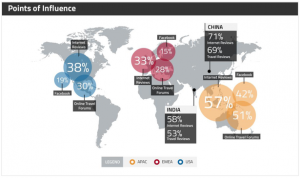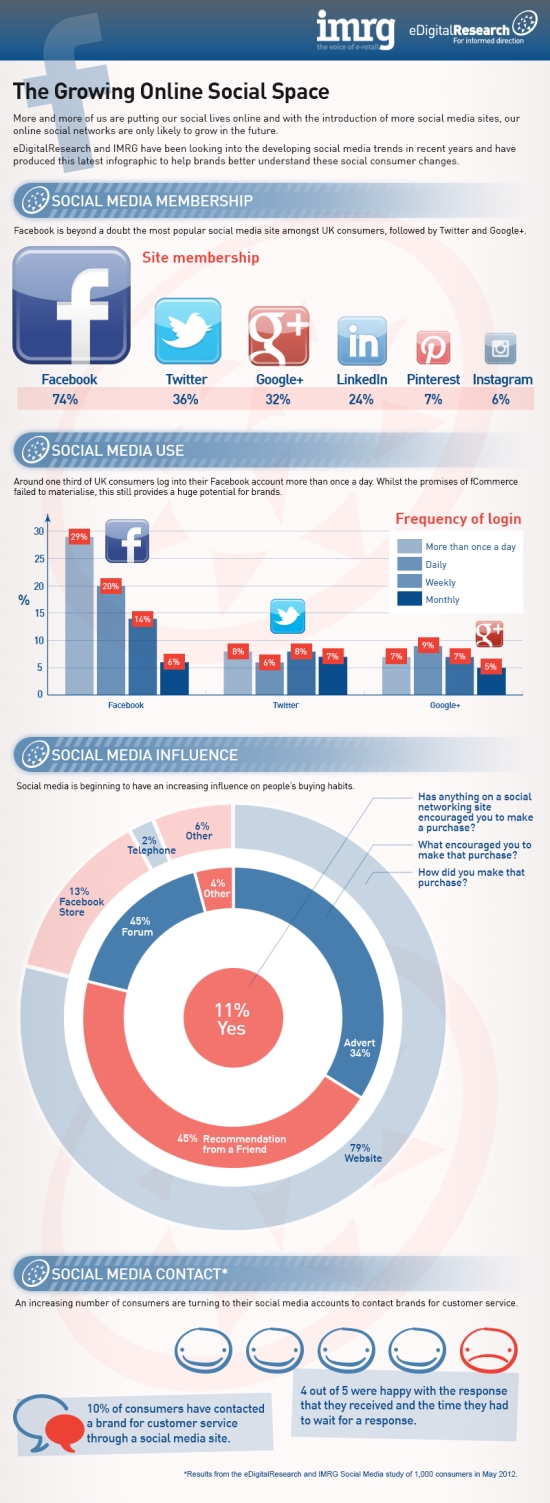By Nicole Petrak, New Media and Assistant Editor to AdventureTravelNews
Mobile will continue to be one of the most important trends in 2013, but you'll notice the buzz has shifted from optimization of your content and casual engagement (such as the Facebook "Like") towards the intersection of value and functionality (i.e. apps that engage the consumer directly to you and your product) and commerce.
Tnooz outlines some interesting positive results found in Google case studies where travel companies, including Visit Greece, experienced significant positive uptick in booking through 'socially-enabled advertising' booking path for travel companies; the article is quick to point out that in the West at least, the actual amount of people overtly booking things based on what they see on social networks is low - 11 percent, down from 15 percent in mid 2012. (These numbers are from the U.K. and based on the infographic at bottom from eDigitalresearch/IMRG infographic. Of those consumers who did purchase after seeing social content, over 40 percent reacted to content from an online friend, and 34 percent reacted to ads).
So despite across widespread social media adoption in the West, if you're not equipped to take bookings on mobile, you still have some time to catch up (but please - optimize your content already!).
This is not the case however, if you're target consumers that live outside Europe and North America. According to Mashable, the World Bank says roughly 75 percent of the word's entire population has access to a mobile phone - and most of them (5 billion out of 6 billion worldwide) are in developing countries that are bypassing the land-based Internet infrastructure the West started out with.
Granted, smartphone and data packages are out of the reach of most of these users yet - but companies targeting the up and coming middle class travelers of China, Brazil, India and other nations will need to focus their efforts on regional mobile adaption as well as finding the appropriate middlemen:
Therefore, many apps designed in developing countries are built as effective low-bandwidth solutions, often employing WAP, SMS and other technologies now considered "low-tech" by developers working with cutting-edge software and hardware [...] The challenge now is to enable people, businesses and governments in developing countries to develop their own locally-relevant mobile applications so they can take full advantage of these opportunities.
But there are still enough non-Western smartphone users to make the numbers impressive. TravelWeekly cites that up to seven out ten brands are seeing increased direct bookings from social sites in Asia, whereas Econsultancy reports that 89 percent of Asia Pacific consumers use travel-related apps prior to or during travel. The same group also sees 70 percent of travelers using social media for travel inspiration versus 51 percent globally.
The bottom line: You need an effective, reliable mobile presence of your sites and some of your content no matter what. But before building out apps and online purchasing tools, assess your target consumers and their regional and demographic habits.


